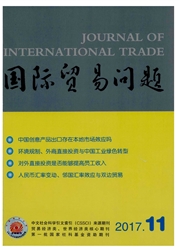

 中文摘要:
中文摘要:
本文从卫星遥感数据中提取出中国220个地级市1998—2010年间的PM2.5浓度值,基于Sp VAR模型研究外商直接投资对雾霾污染的时空传导效应。研究结果表明:外商直接投资对雾霾污染的皆具时间滞后性和空间溢出性,期初在全国层面上呈现"污染天堂"效应,但在第6期转为"污染光环"效应;分样本结果显示外商直接投资在中国地区间同时存在着"污染天堂"以及"污染光环"效应,其中对东部地区雾霾污染的负面影响最大、持续时间最久,西部地区次之,而中部地区在期初存在一定的改善作用;政府在防治雾霾污染时需要因地制宜,适时介入引资项目的环境监管工作。
 英文摘要:
英文摘要:
This paper extracts the PM2.5 of 1998-2010 from the satellite monitoring data, which contains 220 cities of China. Based on the Sp VAR model,this paper discusses the impacts of FDI on the Haze pollution in temporal-spatial dimension. The empirical results on national level show that the increasing of FDI significantly worsened the city's Haze phenomenon in the early period, presenting"pollution heaven"effect. This effect can maintain 5 phases and the"pollution halo" effect appears after it. The empirical results of the different regions show that "pollution heaven" and "pollution halo" effect both exist in China,and the worst impacts are in the eastern region, followed by the west. However,it shows an effect of improvement in the central region. Local governments need to adjust measures to different conditions, and get involved in the work of preventing pollution of investment projects timely.
 同期刊论文项目
同期刊论文项目
 同项目期刊论文
同项目期刊论文
 期刊信息
期刊信息
